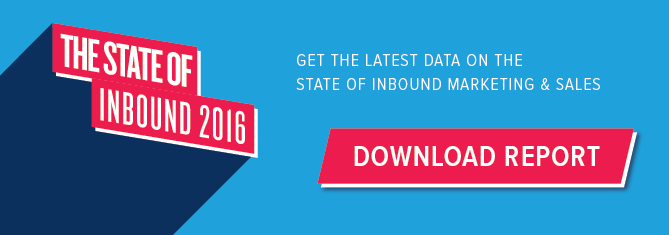
Online Strategist at Zooma since 2012. 15+ years of experience as a manager, business developer and specialist within online and e-commerce.
Keep me updated!
Subscribe

Every year for the last eight years, HubSpot has come out with a report where it has surveyed thousands of marketers and salespeople around the globe about their challenges, priorities, and strategies in marketing and sales. This year is no different and today the 2016 edition of the State of Inbound report is released. If you have enough time and interest, make sure you read the full report. If not, this is our short top 10 takeaways from it. Enjoy!
Before we move into the insights, let’s dispel some of the obvious questions surrounding this report; is it only HubSpot customers that are surveyed? Is it only North America? Is it only B2B or perhaps only B2C?
Now, if this looks relevant to you, let’s focus on what we think are some of the best takeaways from the 2016 report!
‘The world is becoming more inbound. It’s growing more authentic, less interruptive. And with the findings of this year’s report, I think it’s safe to say that over the next ten years we’re going to see an even more inbound world.’
– Brian Halligan, CEO HubSpot
We have been saying for years that ‘there is an empty chair’ in every industry. Guess what? There definitely still is.
Close to 1 in 4 of respondents have a lead-to-customer rate of less than 10%. Only 1 in 10 say their average lead-to-customer rate is 50% or higher.
Similarly, 34% say it’s more difficult closing deals. Leads are simply more educated than ever before.
More and more companies also rely on freelance writers and agency partners.
1/3 of marketers says they typically spend 1–2 hours, 23% spend 2–3 hours.
74% say their company’s top priority is converting contacts / leads to customers and 57% say growing traffic.
Companies that described themselves as outbound-focused have more trouble with proving ROI (49% versus 42%) and securing budget (33% vs 26%), compared to their inbound marketing peers.
81% of organisations that do inbound rate their marketing strategy as effective, only 18% of those that primarily do outbound can say the same.
A further 44% stated that the two departments were generally aligned, whereas 35% are rarely aligned, misaligned or don’t know.
Half of marketers who calculate ROI will get a higher budget in the coming year, compared to 30% for those who don’t.
If you like our blog and would like more insights like these then click below to subscribe!
